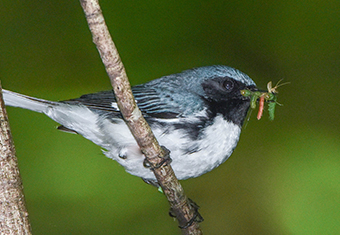

Abstract
Globally, migratory birds are facing precipitous declines, and successful conservation depends on understanding drivers of habitat quality across the full annual cycle. Because of the importance of insect prey for sustaining bird populations in all seasons, bird conservation is intimately connected to the conservation of insects, as well as the plants that support insect communities. Thus, understanding habitat quality requires a multi-trophic approach that considers interactions among plants and animals. Plant species can vary 100-fold in the diversity and abundance of insects they support; however, few studies have investigated whether variation in plant community impacts insects to the extent that it affects prey availability for insectivorous birds. My primary objective is to use a multi-trophic approach to disentangle the relative importance of plant quantity, identity and diversity for restoring habitat for long-distance migratory birds. I will focus on a critical habitat for eastern migratory birds en route: forests and woodlands used to refuel for migratory flight (i.e. stopover sites). I will investigate bird responses to tree composition and structure at two scales that inform restoration: habitat use using landscape-wide bird densities derived from NEX-RAD weather radar; and habitat quality by measuring diet, physiological condition and stopover duration to compare refueling performance among urban forests. Together these results will have direct application to habitat management and bird conservation across the region by identifying where and which forest characteristics are important for migratory birds. More generally, my research will further evaluate the extent that integrating plant identity into bird habitat management guidelines can improve conservation success.
